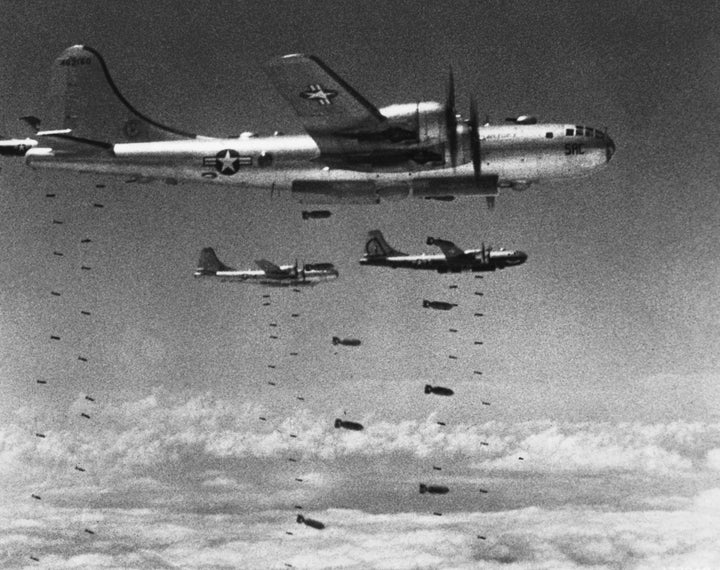
Cross-posted with TomDispatch.com
At the U.N. recently, Donald Trump followed up on his bloodcurdling threat to unleash on North Korea “fire and fury like the world has never seen” (essentially a warning of nuclear terror) with an even grimmer threat: to “totally destroy” that country. In his histrionic bluntness, Trump was not alone in raising the nuclear issue. We know, for instance, that Secretary of Defense James Mattis recently discussed with his South Korean counterpart the reintroduction of American “tactical” nuclear weapons, which happen to be anything but tactical in the normal sense of the word, in the South. While it’s true that no previous American president has spoken in the style of The Donald, he stands in something of a proud American tradition when it comes to threatening North Korea, one that goes all the way back to the Korean War era.
During that conflict, the U.S. Air Force dropped World War II levels of explosives on the Korean peninsula, leaving hardly a building standing in the northern and central parts of the country, and driving much of the population quite literally underground. The city of Wosun, for example, was bombarded from the sea for 41 days and nights in what Rear Admiral Allan Smith called “the longest sustained naval or air bombardment of a city in history.”
Meanwhile, the use of nuclear weapons was both considered and threatened. Here, for instance, is a passage from my book The End of Victory Culture on the subject:
“At rear bases in Japan, atomic bombs were readied, the president [Truman] spoke publicly of their use, and the government seriously weighed various plans for their employment. According to historians Bruce Cumings and Jon Halliday, the nearest the United States came to using them was ‘in early spring 1951. On 10 March, [General] MacArthur asked for something he called a “D” Day atomic capability... On 5 April the Joint Chiefs ordered immediate atomic retaliation against Manchurian bases if large numbers of new [Chinese] troops came into the fighting... and on 6 April Truman issued an order approving the Joint Chiefs’ request and the transfer of a limited number of complete atomic weapons “to military custody.”’
“China, as well as Korea, was publicly and privately threatened with atomic attack. Lone B-29s were even sent on Hiroshima-like bombing runs over the North to drop dummy bombs in simulations of the real thing. In January 1953, a new artillery piece, the 280mm atomic cannon, was given a noticeable place in Dwight D. Eisenhower’s inaugural parade and subsequently a battery of the guns was sent to Korea...”
Yet North Korea did not surrender. A lesson somehow not yet absorbed in the United States 64 years of confrontation later.
If, however, we all live through this grim moment of nuclear and other threats without Asia going up in flames (and then, undoubtedly, a crippled world economy going down in flames), historian Alfred McCoy offers quite a different vision of what World War III in Asia might look like in 2030. It’s a high-tech tale of the rise of China and the decline of Donald Trump’s America (never quite made “great” again), adapted from his dazzling new book, In the Shadows of the American Century: The Rise and Decline of U.S. Global Power.
